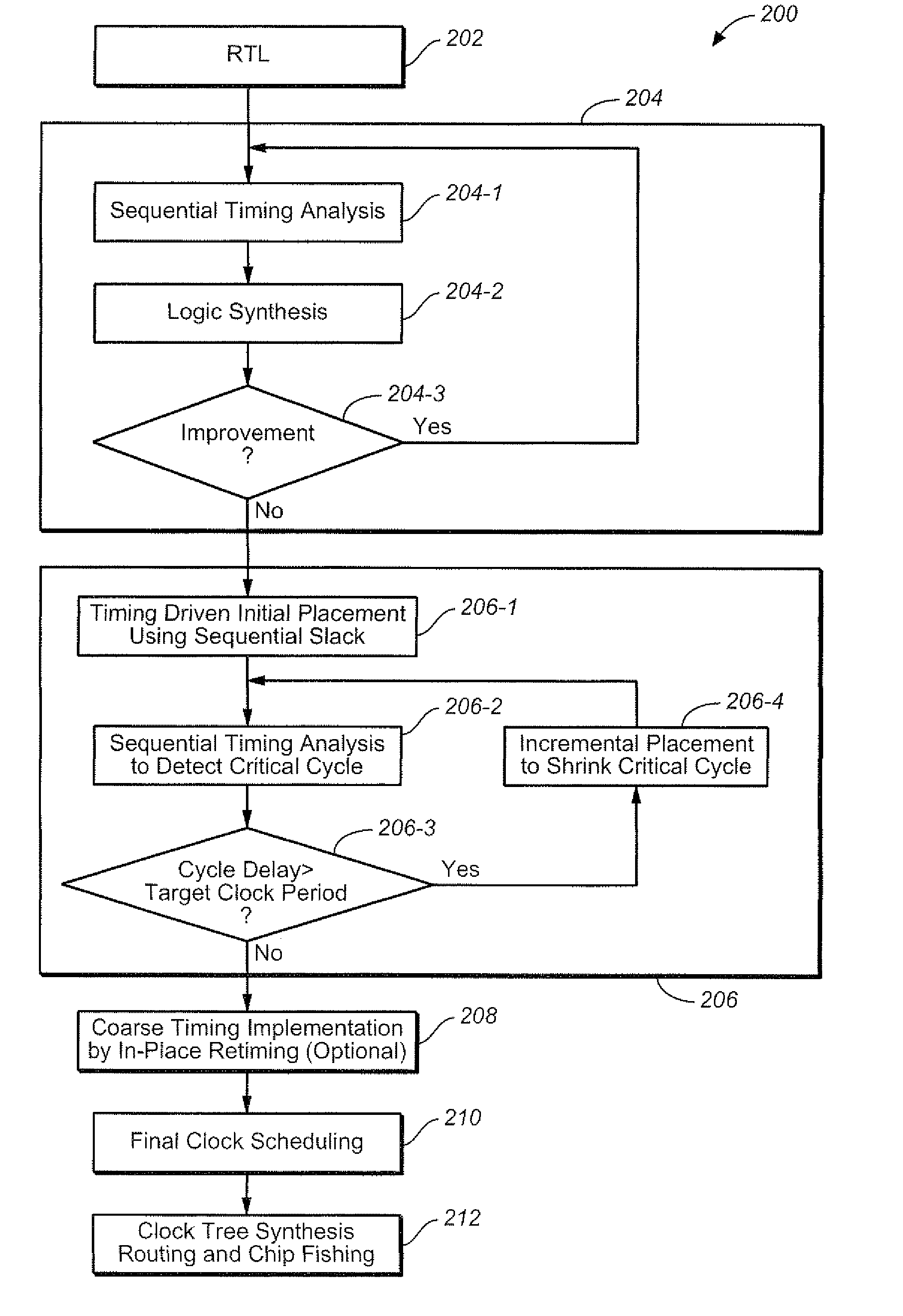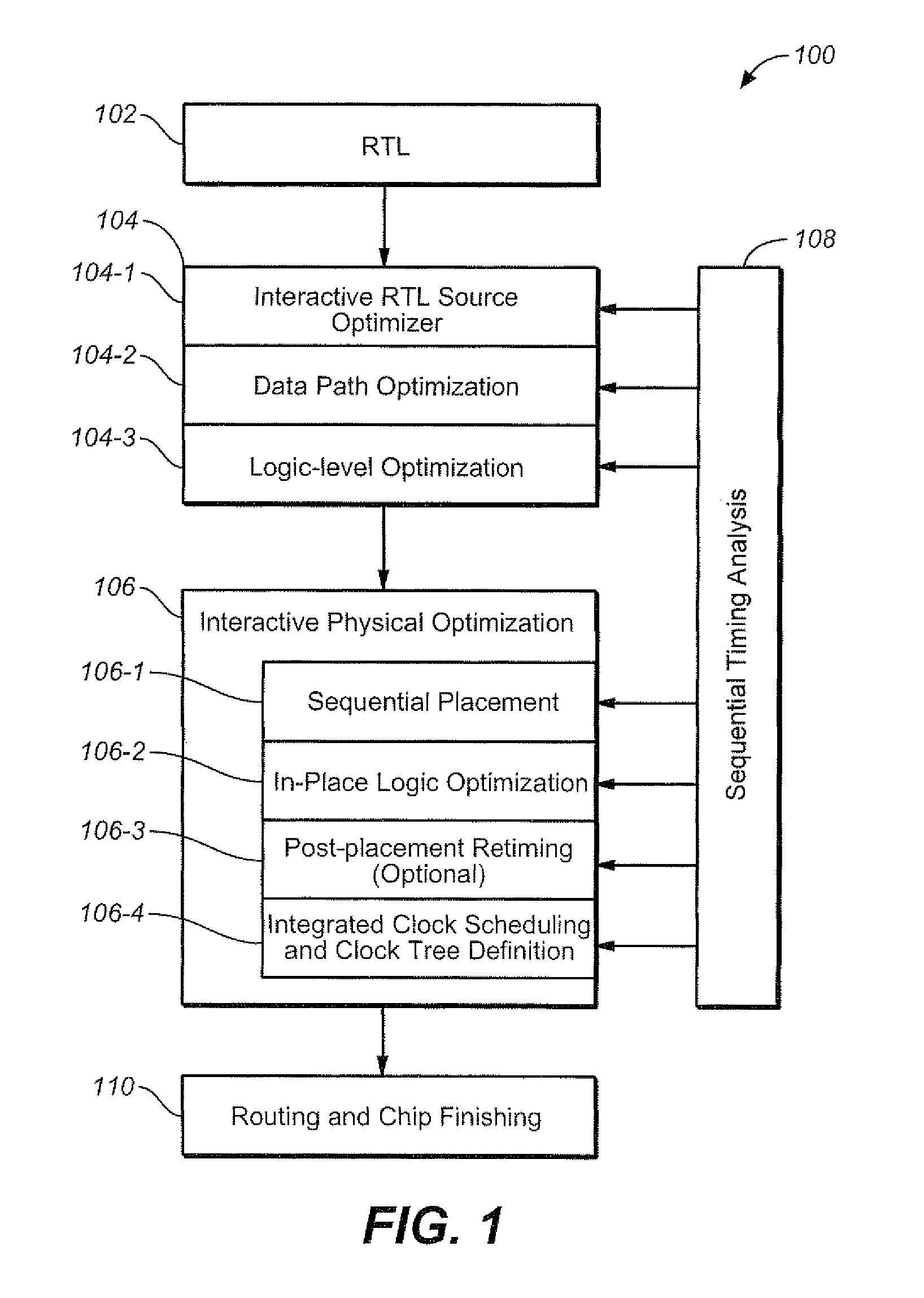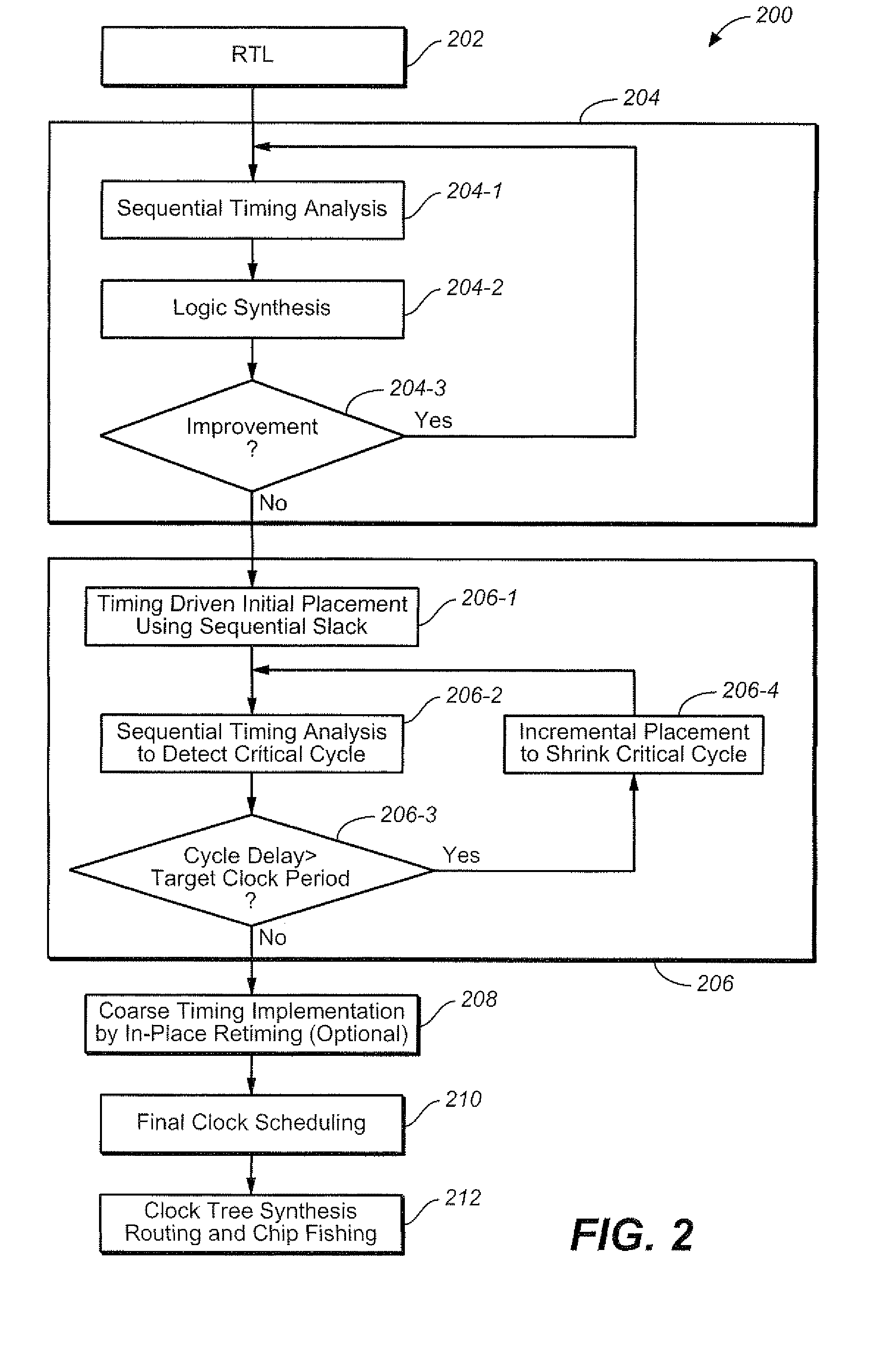Optimizing integrated circuit design through use of sequential timing information
a technology of sequential timing information and integrated circuit design, applied in the direction of cad circuit design, program control, instruments, etc., can solve the problems of inability to accurately predict the impact of retiming at early design flow stages upon downstream design, difficult to abstract model physical effects, and inability to accurately predict the impact of retiming at early design flow stages on downstream design, etc., to achieve less reduce the minimum cycle delay of overall circuit, and identify and implement design changes involving logi
- Summary
- Abstract
- Description
- Claims
- Application Information
AI Technical Summary
Benefits of technology
Problems solved by technology
Method used
Image
Examples
Embodiment Construction
[0046]The following description is presented to enable any person skilled in the art to make and use a system and method for sequential timing analysis and for using sequential optimization to drive one or more stages in an integrated circuit design process. The description discloses the system and method in accordance with embodiments of the invention and in the context of particular applications and their requirements. Various modifications to the preferred embodiments will be readily apparent to those skilled in the art, and the generic principles defined herein may be applied to other embodiments and applications without departing from the spirit and scope of the invention. Moreover, in the following description, numerous details are set forth for the purpose of explanation. However, one of ordinary skill in the art will realize that the invention might be practiced without the use of these specific details. In other instances, well-known structures and processes are shown in bl...
PUM
 Login to View More
Login to View More Abstract
Description
Claims
Application Information
 Login to View More
Login to View More - R&D
- Intellectual Property
- Life Sciences
- Materials
- Tech Scout
- Unparalleled Data Quality
- Higher Quality Content
- 60% Fewer Hallucinations
Browse by: Latest US Patents, China's latest patents, Technical Efficacy Thesaurus, Application Domain, Technology Topic, Popular Technical Reports.
© 2025 PatSnap. All rights reserved.Legal|Privacy policy|Modern Slavery Act Transparency Statement|Sitemap|About US| Contact US: help@patsnap.com



